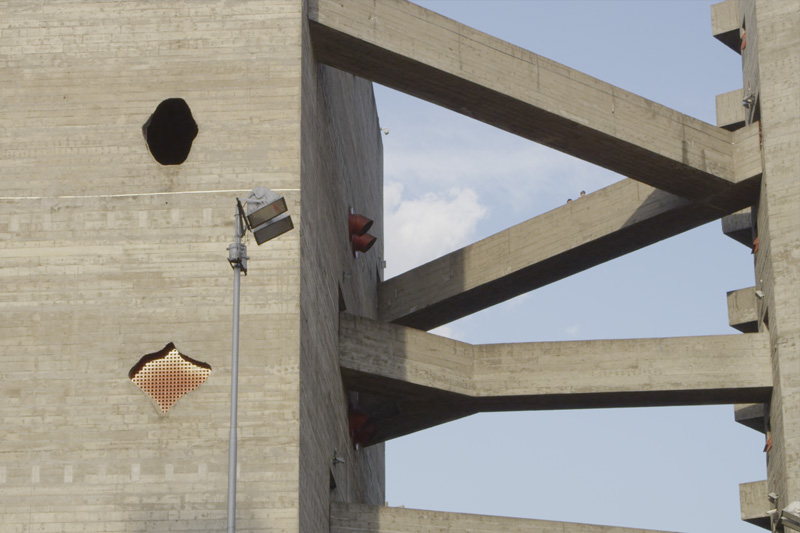
Dániel Kovács
Film: Precise poetry: Lina Bo Bardi’s architecture (Belinda Rukschcio, 2013, 55’)
Satudray 8 March – 17:00
Architecture is the answer to all the problems of humanity. Lina Bo Bardi’s work is based on that theory. She is the same age as modernity: born in 1914, the year of the Werkbund exhibition, in Cologne. She started her career in her home country, in Italy. Though Precise Poetry is a film on her life’s work, directed by her sixty years younger German colleague, Belinda Rukschcio; it is focusing entirely on Bardi’s Brazilian works. Lina and her husband arrived to Brazil in 1946 where they both made a great career – she as an architect while he as a museologist and art historian. Lina’s first plan (actually built in 1951), was Casa de Vidro, also shown in the movie, their home with her husband, a glass building standing on columns in the outskirts of Sao Paolo, just 2 years after Philip Johnson’s similar, renown building was built. The villa itself, once so visible, is hard to find today: Bardi re-afforested the property that was a tea-land previously, thus it feels like being in the woods behind the glass walls.
Though the film begins with Bardi’s famous work, the new building of Sao Paolo’s art museum (managed by Bardi’s husband at that time), the small villa tells a lot more about the architect’s personality: her faith in modern ideas and her distinctive spirit. That building had an important role in the intellectual life of the 1950’ of São Paulo: all the important people were invited to Sunday lunches. Like during those years back then, Bardi is becoming Lina within these very moments of the film. According to stories told by both clients and former colleagues – almost all of them are men – a picture of a rather autocratic, abstract minded figure of a woman is drawn who was also sensitive to practical issues – a true character of the 20th century.
And that is the biggest merit of the film. It does not aim to understand most of the buildings she designed, not even those that strongly contributed to the Lina-myth: such as the asymmetrical, punched, concrete silos of SESC Pompeia. In the meantime, during those long monologues, some really important things have been told, among others, references to the ideological aspects of Lina’s art. Who would dare to identify with that as an architect these days? Architecture is the answer to all problems of humanity. Lina Bo Bardi’s work is based on that statement, and it is nonetheless valuable, though we know: this statement is false.
